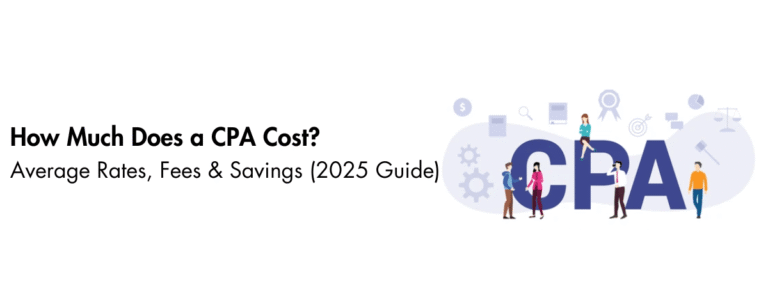Build for focus, compliance, and repeatability on day one. Growth gets calmer when your foundations are simple and strong.
Table of Contents
- Key Takeaways
- Define Your Purpose, Strategy, and Target Market
- Choose a Legal Structure and Protect Against Liability
- Secure Your EIN, EFIN, Licenses, and Insurance
- Set Up Banking, Policies, and Administrative Operations
- Decide on Location, Home Office, Virtual, or Physical Space
- Clarify Credentials, Service Scope, and Compliance Limits
- Build Your Service Menu and Delivery Workflow
- Price Your Services, Hourly, Fixed Fee, and Value Based
- Plan Startup Costs, Budget, and Technology Stack
- Attract, Convert, and Retain Clients
- FAQs
Key Takeaways
- Define a tight niche and measurable purpose, then pilot offers with 5 to 10 prospects. Move forward if about 20 to 30 percent convert at your target price.
- Start hourly to learn true task time, then shift to fixed fee tiers that target 50 percent or higher gross margins with clear SLAs and change order rules.
- Choose the right entity with your attorney, confirm state board rules if you use “CPA,” and bind professional liability plus cyber coverage.
- Secure your EIN, apply for an EFIN if you e file, register with your state, and standardize engagement letters for every job.
- Use a cloud stack with a client portal, e signature, role permissions, and monthly reconciliations. Keep six months of operating capital.
- Hire when sustained capacity passes about 75 percent, start with ops or bookkeeping support. If you need elastic capacity, consider white label production that aligns with U.S. standards.
Define Your Purpose, Strategy, and Target Market
Before logos or leases, write a one sentence purpose that can guide every choice. For example, we provide bookkeeping, payroll, and quarterly tax planning for restaurant groups under 5 million in revenue. That single line guides your pricing, your tech stack, your hiring plan, and even your insurance limits.
Make your niche specific
- Industry and model, restaurants, dental groups, ecommerce, construction
- Size, revenue band, headcount, number of entities
- Locations and complexity, sales tax exposure, payroll mix
- Typical pain points, late closes, messy AP, no cash forecast, tax surprises
Run a mini pilot with 5 to 10 prospects. If 20 to 30 percent sign at your price, you have signal. If not, adjust the offer or the price and retest. Keep this cycle short, two to four weeks, so you are learning, not waiting.
Align services to your niche
- Bookkeeping and payroll with a clean monthly close and a short management pack
- Quarterly tax planning with estimates and a simple action list
- Outsourced controller or CFO for cash flow, budgets, and board ready reporting
Write deliverables, publish SLAs, and put each service into a package. Packages make pricing clean, delegation easier, and client expectations clear. Your aim is a predictable calendar and a margin you can defend.
Pick your delivery model and write the rules
- Remote, strong access controls, client portal, documented approvals
- Hybrid, coworking for meetings, team works from anywhere
- Office, local presence for premium meetings, added overhead and controls
Whatever you pick, document hiring standards, device and data rules, and your review steps. If a new hire joins next week, they should understand your workflow without guessing.
Choose a Legal Structure and Protect Against Liability
You want liability protection, tax alignment, and the right to present your services without confusing clients or regulators.
Practical entity choices to discuss with counsel
- LLC for general practice, often with an S Corp election for tax alignment
- Professional LLC, PC, or LLP where state rules require it for CPA firms or attest services
- Partnership or C Corp for specific growth or equity goals
Confirm your state board’s rules if you plan to use “CPA” in the firm name or perform attest work. States vary on firm registration, majority CPA ownership, and office supervision rules. Write this into your launch checklist so you do not delay proposals over naming or signature authority.
Risk controls you should not skip
- Engagement letters for every engagement, even small jobs
- Client acceptance checks for fit, deadlines, and risk flags
- Insurance, professional liability sized to your services, add cyber and EPL where needed
- Corporate formalities, separate bank account, minutes, resolutions, and records
Quick entity table
| Decision area | Practical action |
| Entity choice | LLC, PLLC, PC, or LLP based on state rules and services |
| Tax alignment | Discuss S Corp timing with your tax advisor |
| Risk transfer | Bind E&O, consider cyber and EPL |
| Client control | Standard engagement letters with a T and C addendum |
| Governance | Keep minutes and maintain a clean, separate bank account |
Secure Your EIN, EFIN, Licenses, and Insurance
Lock down the IDs and coverage that let you operate safely, then store confirmations in a shared folder with clear names.
IDs and registrations
- EIN, apply at IRS.gov for free, usually instant during posted hours, then save the PDF notice
- EFIN, enroll in e Services, complete the e file application, allow time for suitability checks, and complete fingerprinting if required for principals or responsible officials
- State, register your entity with the Secretary of State, obtain any state tax IDs, confirm whether your firm can use “CPA” in the name, and complete firm registration if required
Insurance you actually use
- Professional liability, limits sized to your client mix, services, and contracts
- Cyber liability, right size the limit for payroll data, W 2s, bank access, and volume of PII
- General liability and EPL, as needed for office or hiring
Keep policy numbers, endorsements, and claims steps in your operations manual. Review coverage at least once a year, or when services change.
Set Up Banking, Policies, and Administrative Operations
Open a dedicated business checking account and merchant account in your firm name with your EIN. This preserves the liability veil and keeps your books clean.
Write and centralize firmwide policies
- Billing and collections, ACH on file, invoice cadence, and any late fee policy
- Engagement letter templates with a terms and conditions addendum
- Data retention rules, for example keep tax records for 3 to 7 years based on document type
- Access and device standards, strong passwords, MFA, and offboarding steps
Choose a cloud stack that cuts clicks
- Practice management with workflows, time, billing, and e signature
- Client portal for all file exchange, no email attachments
- Cloud accounting with automated bank feeds and reconciliation rules
- OCR for receipts and bills, plus bank rules to trim manual entry
Require two step approvals for refunds and outgoing payments. Reconcile bank and processor accounts monthly without fail.
Decide on Location, Home Office, Virtual, or Physical Space
Your location choice drives startup cost, security, and recruiting.
- Home office, often 1,000 to 3,000 to get going with software and gear, confirm zoning and insurance
- Fully virtual, wide reach and lean overhead, requires tighter security, portals, and cyber coverage
- Physical office, strong for premium meetings, often 10,000 plus all in with rent, utilities, and furnishings
- Hybrid, coworking for meetings with a lean core footprint
Hold at least six months of operating capital so you can price from confidence rather than cash stress.
Clarify Credentials, Service Scope, and Compliance Limits
Prevent confusion with plain disclosures and tight letters.
Credential clarity
- If you hold out as a CPA firm, confirm ownership and naming rules in your state
- If you plan attest services, confirm that your entity type and ownership meet board rules
- For IRS representation, know when EA or CPA status is required
Scope clarity
- Every engagement has a clear deliverables list, timeline, and exclusions
- Client responsibilities are spelled out, data deadlines and access are listed
- Change orders are simple, a short form with price and timeline impact
Risk to safeguard map
| Risk | Safeguard |
| Client confusion | Plain credential and scope disclosures |
| Regulatory issues | Correct entity and firm registration where required |
| Disputes and claims | Engagement letters, insurance, reviews, and approvals |
Build Your Service Menu and Delivery Workflow
Turn your strategy into packages you can sell and deliver at scale. Target 4 to 6 standard bundles.
Example bundles
- Bookkeeping Monthly, reconciliations, month end close checklist, and a short management pack
- Payroll and Filings, pay cycles, filings, and year end forms
- Tax Compliance, business return, owner returns if applicable, and estimated tax guidance
- Quarterly Planning, tax planning and cash forecasting
- CFO Advisory, KPI design, budgeting, and board ready reporting
Publish inclusions and SLAs. Lock scope and set approvals. Pair packages with SOPs and short screen recordings so delivery does not depend on one person.
Your workflow in five steps
- Intake and organizer, portal invites, and access to books, payroll, and banking
- Preparation, reconciliations, coding rules, and variance notes
- Internal review, checklist, and sign off
- Client delivery, management pack or tax return with a short summary
- Quarter or month end retro, issues log and improvements
Price Your Services, Hourly, Fixed Fee, and Value Based
Start hourly to learn your task time. After 90 to 180 days, convert to fixed fee packages with tiered options, basic, standard, and premium. Set a minimum job value, for example 500 to 1,000, to filter mismatched work.
When hourly still wins
- One off advisory and emergency cleanup
- Litigation support and messy migrations
- Launching a new service for the first three to six months
Fixed fee foundations
- Use your hourly data to set fixed fees that target 50 percent plus gross margin
- Lock scope, list deliverables, set SLAs, and enforce change orders
- Review margins each quarter, remove low value tasks, streamline handoffs
Value based advisory
- Price against outcomes once your cost to serve is proven
- Keep a base retainer and, where appropriate, a performance component
- Anchor proposals by showing the highest advisory tier first
Plan Startup Costs, Budget, and Technology Stack
Estimate your runway, then protect it. A lean launch can start near 2,500 for software and insurance. A leased office with furniture and advanced systems can reach 25,000 plus. Keep six months of operating expenses so you can say no to the wrong work and yes to better clients.
Quick budget cue, plan 2.5k to 25k depending on space and systems, plus six months of reserves.
Core tools checklist
- Cloud accounting and integrated tax e file
- Practice management with time, billing, and workflows
- Secure document storage and a client portal
- E signature and task templates
- OCR for receipts and bills, plus bank rules
Standardize pricing into three tiers, track time on new services, and keep your approvals visible. Automation should remove clicks, not your review culture.
Attract, Convert, and Retain Clients
Nail one niche, then publish package pages that speak to that owner’s problems. Keep a simple path to buy.
A repeatable sales to delivery flow
- Discovery call, 15 to 20 minutes, confirm systems, deadlines, and risk
- Same day proposal, three options with inclusions, SLAs, and your engagement letter
- E signature and payment method on file
- Onboarding checklist, portal setup, app invites, and access requests
- Quick wins in the first 30 days, cash clarity, clean feeds, overdue filings
- Quarterly review with KPIs, cash forecasts, tax planning, and next steps
Hiring triggers and first roles
- Sustained billable capacity above 75 percent
- Admin work consuming 20 percent of your week or more
- Hire ops or bookkeeping support first to protect delivery and free your time for advisory
Where white label support helps
If tax season pushes your team past healthy limits, or if you are turning down work because of bottlenecks, consider white label production that fits your standards. Accountably partners with CPA firms, EAs, and accounting practices to provide offshore staffing and back office teams that integrate with your processes, align with U.S. compliance, IRS rules, and GAAP, and give you capacity for advisory without adding fixed overhead.
FAQs
Can you make 500,000 a year as an accountant
Yes. Specialize in a high value niche, set minimums, move routine work to subscriptions, and price advisory by outcomes. Protect capacity with smart hiring or white label help, review pricing yearly, and keep compliance tight.
Is owning an accounting firm profitable
It can be very profitable when you price with confidence, keep overhead lean, use a clear workflow, and hold client reviews each quarter. Small improvements in scope control and packaging can lift margins fast.
How much does it cost to start a CPA firm
Plan roughly 2,500 to 25,000 plus depending on space, software, licensing, insurance, and early marketing. Keep six months of reserves.
Can you make 300,000 as a CPA
Yes. Combine a focused niche, fixed fee packages, value based advisory, and the right capacity plan. Trim low margin work and raise fees annually.







